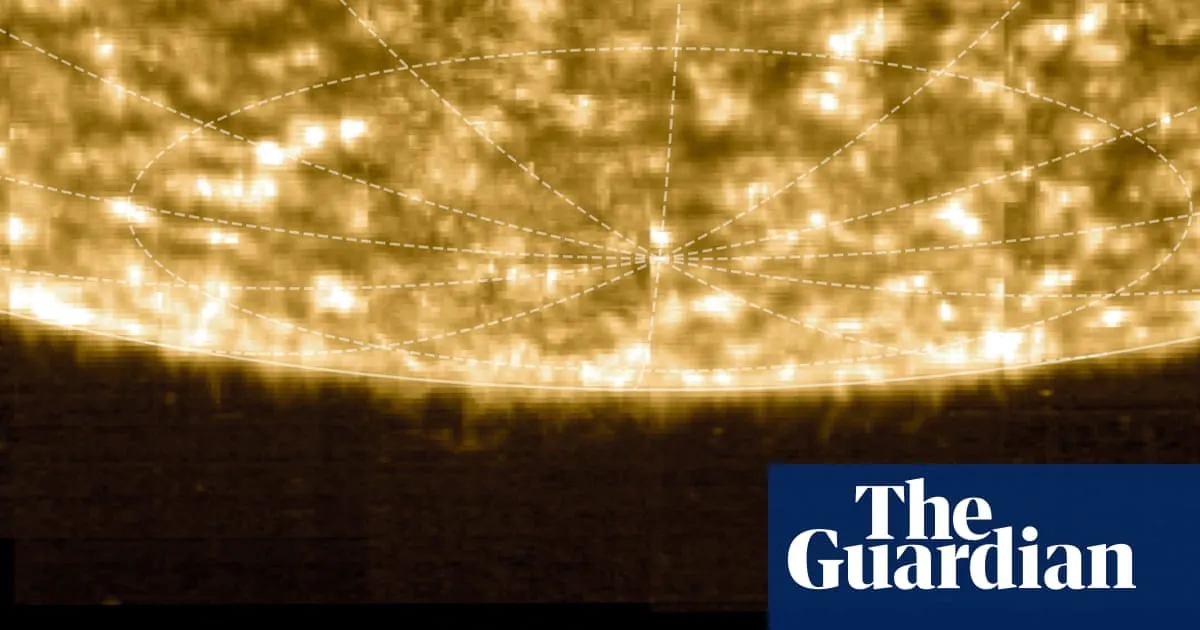
For the first time in history, the sun’s uncharted south pole has been revealed through stunning images transmitted from the Solar Orbiter spacecraft. This remarkable mission, a collaboration between the European Space Agency (ESA) and Nasa, has successfully ventured below the planetary plane to capture the sun’s enigmatic polar regions, providing scientists with unprecedented insights into solar activity.
The Solar Orbiter's observations have unveiled a chaotic patchwork of magnetic activity at the sun’s pole, which is crucial for understanding the sun’s magnetic field, known to flip approximately every 11 years. “Today we reveal humankind’s first-ever views of the sun’s pole,” stated Prof Carole Mundell, the ESA’s director of science. “The sun is our nearest star, giver of life and potential disruptor of modern space and ground power systems, so it is imperative that we understand how it works and learn to predict its behaviour. These unique views from our Solar Orbiter mission mark the beginning of a new era of solar science.”
The ambitious $1.3 billion (£1.1 billion) Solar Orbiter mission, which launched in 2020, captured images of the sun’s south pole in mid-March. During this phase of the mission, the spacecraft dipped to an angle of 15° below the solar equator to conduct its first high-angle observations. Unlike Earth, which has a distinct north and south magnetic pole, the sun experiences a magnetic flip approximately every 11 years, a phenomenon currently in progress as the sun approaches a solar maximum. During this period, the sun's magnetic south pole will become north, and solar spots and flares are most active.
The initial magnetic field measurements from Solar Orbiter reveal a fragmented mosaic of both north and south polarities at the base of the sun. While this mixed polarity had been anticipated by computer models, it had never before been observed directly. Scientists emphasize that tracking the transformative changes in the sun’s polar magnetic fields is critical for enhancing predictions of the solar cycle. “We didn’t know what exactly to expect from these first observations – the sun’s poles are literally terra incognita,” explained Prof Sami Solanki, who leads the instrument dedicated to mapping the magnetic field and directs the Max Planck Institute for Solar System Research (MPS) in Germany.
The sun's magnetic cycle is influenced by its unique rotational characteristics. Unlike a solid object, the sun rotates at different speeds, with its equator spinning faster (approximately every 26 days) compared to its poles (33 days). This differential rotation stretches and twists the magnetic field lines around the sun until they become unstable, leading to a north-south polarity flip. Prof Lucie Green from UCL’s Mullard Space Science Laboratory, who has been part of the mission since 2005, stated, “Everything in the atmosphere of the sun and the entire character of the sun is generated by its magnetic field and how that changes over time.” She described the sun's transformation from a relatively quiet star to a highly active and dynamic entity marked by explosive solar phenomena.
In five to six years, the sun is expected to reach its next solar minimum, a phase characterized by the most orderly magnetic field and the lowest levels of solar activity. However, current models and predictions of the 11-year solar cycle have yet to accurately forecast when and how powerfully the sun will reach its peak activity. The Solar Orbiter is set to continue its mission, orbiting the sun at a 17° tilt angle until December 24, 2026. Following its next flight past Venus, its orbit will tilt to 24°, and in 2029, the spacecraft will rise to an angle of 33° above the planetary plane, allowing for further groundbreaking observations.